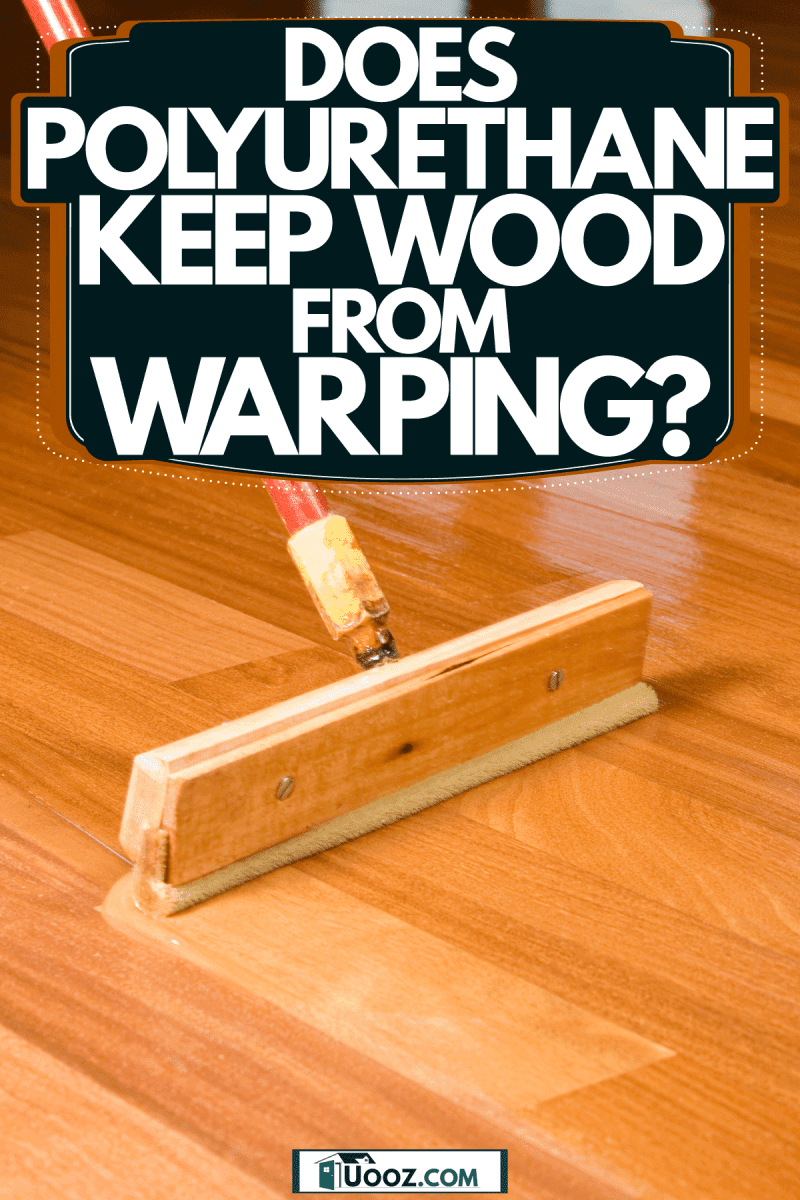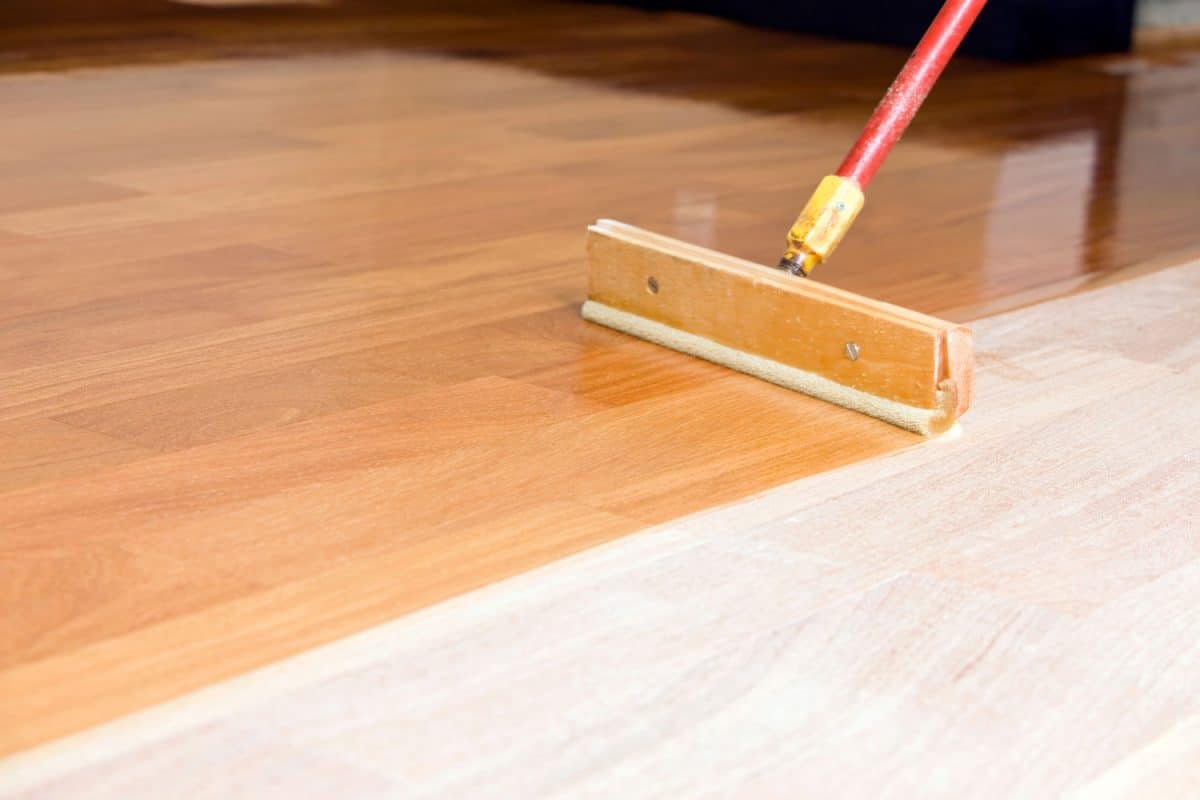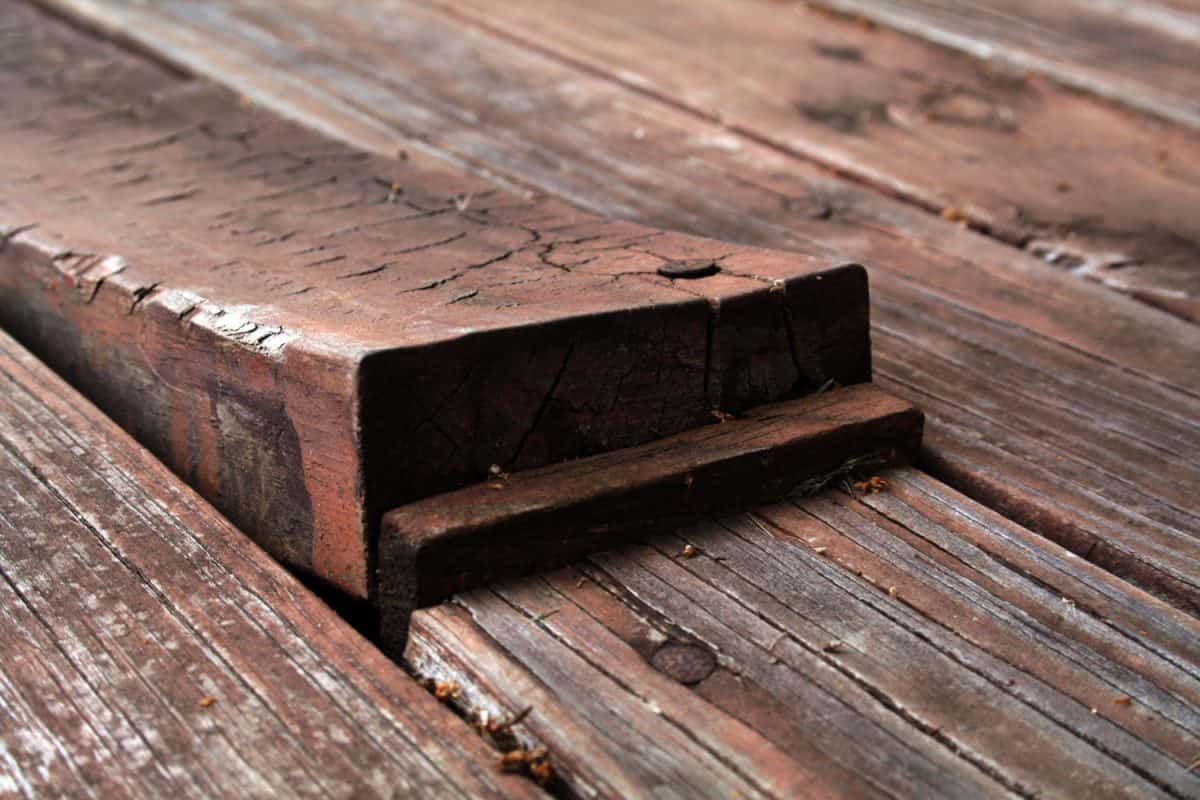Natural wood is a great building material that makes beautiful furniture, floors, and more, but it comes with some disadvantages. Wood is prone to chips, scratches, or warping with normal use. Polyurethane may be an answer to all of these problems. We have searched multiple sources to provide you with some insight on how polyurethane can help to protect your wood.
Polyurethane comes in satin, gloss, or semigloss finishes that can help in protecting your wood from warping, chipping, or scratches. Any of these finishes are transparent and accentuate the full beauty of natural wood while protecting the surface. Polyurethane is a versatile substance that can provide many benefits when applied to wood.
In addition to knowing how to prevent your wood from warping, other questions will likely arise. You may question how to best protect your wood or whether polyurethane will prevent movement. You might wonder if polyurethane protects wood from moisture, if wood expands, and how to seal your wood to prevent this expansion. We will answer all of these questions and discuss other closely related topics, just keep reading!

What is polyurethane?
Polyurethane is a polymer substance that is comprised of links of organic components or molecules. These organic component links are combined using carbamate or urethane. Polyurethane is classified as plastic but is used for protecting and sealing many different surfaces. It is scratch-resistant and durable.
A wide array of monomers, or starting materials, are used to create polyurethane. This simply means that polyurethane, also known as PU or PUR, can come in many forms. Polyurethane is available as a paint, spray, or even foam. These forms of polyurethane can range from flexible to rigid.
Click here to find this product on Amazon.
How does polyurethane work?
Moist conditions can cause warping or wood rot. Polyurethane can provide a nonporous seal for your wood, protecting it from warping or rotting.
Warping, as we will discuss further, is caused by moisture unevenly exiting the wood's surface, while rotting is caused by outside moisture entering the wood. Polyurethane works by sealing the wood and preventing moisture from entering or exiting.
How does warping occur?
Stress on wood caused by uneven drying causes twisting and curving on certain parts of the wood that have dried faster, resulting in a warped look. Moisture leaves the ends of wood quicker than it leaves through the surface of the wood which can lead to uneven drying.
When the ends of the wood shrink from drying without the surface of the wood being completely dry, the wood can shift under the stress. Sealing the ends of the wood in addition to the surface can help to slow or prevent this shift.

Types of wood warping
The five different types of warping result in different types of twisting or curving of your wood. Bowing causes bends that curve your wood to the thinnest side of the wood, while crooking causes the bend on the thicker side of the wood.
A kink is a warp that is located along the width of the wood instead of the length. Cupping is when wood warps into a cup-shaped curve and twisting or winding can occur when the corners of the wood twist along different planes.
What threats does warped wood pose?
Warped wood can compromise the integrity of your structure or project. If structural wood becomes misshapen it can pose many safety hazards. Warping can occur during any stage of woodworking from framing to the end product. Taking proper precautions against warping can keep your project durable and stable.
Can you still use warped wood?
If you have wood stored that has become a bit warped there is no need to waste it. Depending on what you will be using the wood for, warping may not be an issue.
If there is a surrounding structure that will be used to secure the warped wood, warping should not cause any harm. Warped sections can also be cut off of long sections of wood for use.
Application of polyurethane
Polyurethane can be applied by painting it on a wood surface or by spraying it on. Painting or spraying polyurethane is a personal choice, as both methods provide effective protection.
After allowing the first coat to dry completely, a second coat may be applied. Polyurethane is toxic if inhaled so a respirator should be worn throughout the application.
Click here to find this product on Amazon.
How do you protect wood from warping?
Proper ventilation is key in protecting wood from warping. Equilibrium moisture content (EMC) is the optimal moisture level where moisture can neither enter nor escape from the surface of the wood, providing a stable slab of wood. Wood should also be stored on a flat surface to prevent movement and warping.
It is necessary to store your wood in the planned space for a few days prior to using it. If the space is more or less humid than the wood when it is installed, expansion or shrinking is likely to occur.
This can potentially cause movement within your project resulting in suboptimal results. A warmer temperature will also prevent warping by acclimating wood to the temperature quicker than cool temperature.
Choosing wood that is less likely to warp
You will want to pick wood that has a tight or straight grain structure, as this wood is less likely to succumb to warping. Redwood is a lightweight and strong wood that is less likely to shrink, swell, or warp than other woods.
Thinner cuts of wood are also more likely than thicker cuts of wood to warp. Flatsawn wood is the most common form of wood but is more prone than rift sawn wood to warp.
Does polyurethane prevent wood movement?
Wood movement occurs naturally and seasonally, whether the wood is sealed or not. Polyurethane, like any other wood treatment, will not eliminate any movement but will slow it down significantly.
Allowing some space for your wood to move a bit will prevent damage to your project from the movement that will inevitably occur. Choosing a wood with a vertical grain along the width of the wood will prevent large fluctuations in movement but this wood can be difficult to find and also expensive.

Does polyurethane seal wood from moisture?
Polyurethane is a nonporous coating that protects your wood from outside or internal moisture. Although it can help to protect your wood from moisture from entering or exiting, a certain amount of moisture will almost always be present causing shifting and movement in your wood.
Moisture is blocked to a certain degree by the plastic coating that is created when polyurethane is applied to the surface of your wood. The durable coating is essential to make your wood last longer and resist warping caused by the movement of moisture.
Does sealed wood expand?
Wood comes from trees that survive through the cellular content of water. Because water flows through fresh wood, it is designed to expand and shrink with surrounding moisture levels.
Simply sealing wood does not penetrate to the intracellular structure so it can never completely prevent expansion or shrinkage. Natural wood will always expand to some degree, no matter what it is sealed with.
How do you seal wood so it doesn't expand?
Storing your wood for a few days in its intended environment prior to using it will reduce the expansion that will occur after it is secured in a permanent place. Wood is a living matter that will always expand or shrink some.
A state of equilibrium must exist between the humidity in the environment in which the wood will permanently live and the conditions inside of the wood. Because of woods' tendency to swell in a more humid environment. you must anticipate and allow for this expansion when using wood.
Final thoughts
Wood makes a warm and beautiful material for projects and furniture. Warping can spoil the beauty of your wood projects if not properly prevented. Polyurethane is an excellent substance to protect your project or furniture. We hope that this article has helped you better understand how to use polyurethane to prevent unwanted chips, scratches, and warping.
Before you go, here are some other articles that may be of interest to you:
How Long Does It Take For Floor Sealant To Dry?


